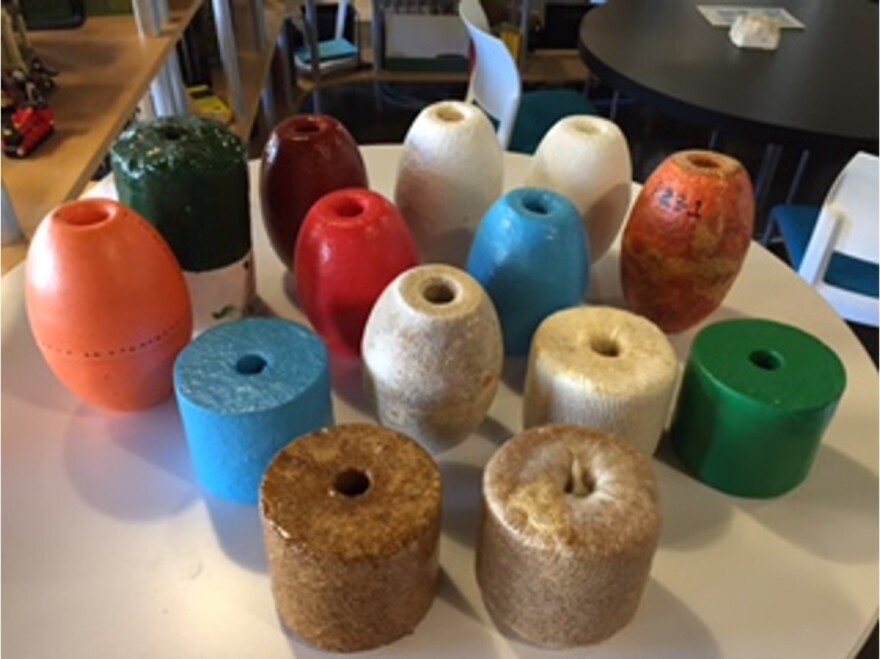A pilot test of buoys made from fungal root networks showed promise as an effective and less wasteful alternative to plastic. Now, a cadre of Maine ocean farmers is hoping to expand prototype testing next year.
This year a handful of oyster farms along the Maine coast grew buoys made of mycelium, the thread-like root systems that sprout mushrooms, and deployed them on a small scale this oyster season. The trial was done to see if the environmentally friendly buoys could be a substitute for some of the thousands of plastic foam buoys used across the Gulf of Maine.
For the most part, the mushroom buoys worked fine, according to the two main farmers who participated, though more testing is needed and they want to finetune the shapes and sizes of the buoys in 2023.
“They stayed buoyant, which was a big piece of it,” said Abigail Barrows, an oyster farmer based on Deer Isle. “But there’s definitely some tweaks we can do.”
The idea to try alternatives to plastic buoys has risen from an environmental movement in Maine’s growing oyster industry. Oysters and other seafood can take in plastics that are found in the ocean and a Bowdoin College study from earlier this year found oysters at nine farms in Casco Bay all contained microplastics.
The so-called myco buoys are grown by putting mycelium in a mold and feeding it with hempstock or other types of plant waste. The mycelium then grows into a floating material that’s biodegradable.
Smithereen Farm, which grows oysters in Pembroke, hosted mycelium expert Sue Van Hook earlier this spring and she showed local aquaculturists the ropes with the mushroom buoys.
The farmers have since been testing out the buoys and trying out different coatings for them, Smithereen farmer Severine Fleming said. The hope is to find a fully biodegradable sealant that can withstand months in the water. Normal buoys are usually made from styrofoam and have plastic, waterproof coatings.
Finding a good non-toxic sealant has proved elusive, but Fleming’s initial findings may indicate it’s not actually needed.
“After five months in the water, I was surprised the uncoated myco buoy was floating fine,” Fleming said.
How long an uncoated buoy would last isn’t clear though, according to Fleming, as some of the oyster cages with the buoys went missing at the end of the year.
Myco buoys do seem to attract birds more than any other type of buoy though, and it’s unclear if that had any effect on the oysters growing below the surface.
Fleming plans to also try out the buoys on her seaweed farm this winter and expects to grow about 400 more buoys for sea trials in April.
She hoped the alternative buoys could be shown off at the Maine Fishermen’s Forum next year, possibly attracting more farmers to the experiment. If that happens, it could give Fleming and Barrows a better sense of if the floats are feasible on a large-scale and at a variety of farms.
“Each of us is approaching the application of this material with different shapes and sizes,” she said. “It’d be so great if we had more people and engineers involved.”
This story appears through a partnership with the Bangor Daily News.


